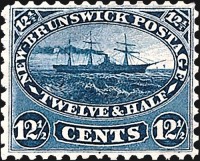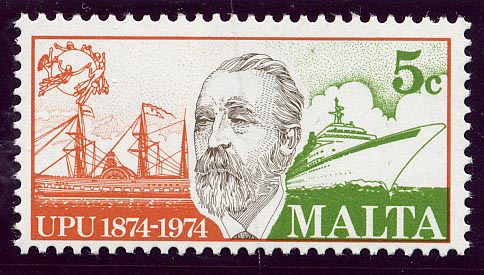Post
by aukepalmhof » Fri Apr 17, 2009 9:35 pm
04 October 1845 the United States Postmaster General invited tenders for a mail service of USA flag ships from New York to Liverpool, Bristol, Southampton, Antwerp, Bremen, Hamburg, Havre and Brest or Lisbon.
One of the bidders was Edward Mills, quoting $300.000 per annum to Havre, France, and after some negotiation to extend the service to Germany, Mills offer was accepted.
Mills and associates formed the Ocean Steam Navigation Company (also know as the Bremen Line) in May 1846. The plan was to build four steamers but not sufficient money could be raised, and only two were ordered the WASHINGTON and HERMANN.
The two wooden paddle steamships were ordered from the Westerveldt and Mackay shipyard in New York.
15 October 1846 WASHINGTON’s first frames were raised.
30 January 1847 launched under the name WASHINGTON.
Tonnage 1.640 tons, dim. 230.5 x 38.9 x 31.0ft.
Powered by a 2-cyl. side lever steam engine, manufactured by Novelty Iron Works, 2.000 ihp. Actually her output was never more as 1.100 ihp. Bunker capacity 1.500 ton, daily consumption 125 tons.
Paddle wheels did have a diameter of 34.7ft.
Three deck vessel, barque rigged.
Passenger accommodation for 140 first class, 44 second class.
Cargo capacity 300 tons.
Carried a full length figurehead of Washington.
24 May 1847 made her trials, the next day also used for trials under steam and sail.
Building cost $252.000.
01 June 1847 at 04.00 pm she sailed from New York for her maiden voyage under command of Capt. Frederick Hewitt and about 127 passengers, the first fully powered American transatlantic liner.
She was bound for Bremerhaven, and would make a call at Cowes Road off the Island of Wight.
She was a slow steamer, her draught was to deep to make a fast passage, and during the crossing she had to stop two times for repair. It took her 14 days to arrive off Cowes, then she headed for Bremerhaven where she arrived 18 June.
When she sailed from Bremerhaven she had on board 46 passengers for New York and 4 for England, arrived Southampton 27 June. Sailing on the 10 July after some repairs and alternations in the engine room.
But by trouble with her grate bars in the boilers which collapsed by the heat given by the English coal she was forged to return to Southampton for replacements. 15 July she sailed out again, and after a passage of 15 days she reached New York.
After arrival many alternations were made, special her stability was not good after using much of her coal bunkers.
Her paddle wheels were reduced in diameter, and cargo capacity increased to 700 tons, and her bottom coppered. The complete engine staff was replaced.
23 September she sailed from New York and after a passage of 15 days arrived off Cowes. On her return voyage she had bad weather for 8 days and was driven off her course. During this return voyage she got an fire in the boiler room by spontaneous combustion of the coal stowed below the boilers, it took 9 hours before the fire was extinguished
09 November 1847 she arrived at New York and her 83 passengers safely embarked.
Her third return voyage was also a difficult one, during bad weather she lost her port side paddle box, for 5 days she had to heave to. The engines did give much trouble and she was without power for many hours.
After 18 days at sea and badly short of coal she headed for Halifax for bunkers. 10 January 1848 she arrived there. After 56 hours in port, with much repair on the engine she departed again for sea, and could steam slowly home. Arrived New York 16 January after a passage from Bremerhaven of one month and 28 days from Southampton.
She completed three round voyages in 1847 and five in 1848; in 1849 she made four round voyages.
For alternations on her engine she was out of service from 06 November 1849 until 20 March 1850. Her only funnel placed between the paddle boxes was moved forward, painted red with a black top.
Even after the alternations her speed improved marginal.
20 March 1850 she sailed from New York but due to bad weather she had a slow crossing, the only good thing was that her coal consumption after the modification was halved. Her return voyage from Cowes she did in 13½ days. During this voyage she had 166 passengers on board.
One year later she made her fastest crossing after she left Cowes on 21 May 1851 and arrived at New York on 2 June. A passage of 11 days and 22 hours. Her average speed was 10.7 knots. She did have on board 170 passengers 250-ton freight.
In the beginning of 1852 most of the trouble was over for the Bremen Line, passengers and freight had increased, but when the WASHINGTON sailed from New York on 27 March 1852, things were going not so smooth again, when she was nearing the English coast on 13 April, Capt Floyd declared the noon position a error, and he changed course, during nightfall he headed north, even when he did see lights on the starboard side.
At 02.00 am the second mate stopped the engine to avoid running aground.
After passing craft were asked for a position it was found out that she were nearer to the Bristol Channel than the English Channel, with low coal bunkers, she had to make a call at Milford Haven. She sailed from there on 16 April. At sea the surgeon declared Capt. Floyd out of his mind, and was overpowered and forced in his stateroom, but he escaped, again overpowered by the crew he was put again in his stateroom and now guarded.
The mate Elisha M Fitch took over command and after arrival in Southampton the captain was declared temporarily insane and put in an asylum ashore. The passage and the detours had taken 22 days the longest crossing for the WASHINGTON.
Mr. Fitch kept command of the WASHINGTON, and in 1854 he came in the news when he together with other vessels rescued the passengers and crew of the Boston packet WINCHESTER in midocean.
The WINCHESTER got in trouble on the 17 April when she during a storm partly was dismasted, and started to leak. Her boats were swept away, passing small vessel took off as many passengers she could take, but when the WASHINGTON her sighted on 02 May during a gale and the sea was running wild, the WINCESTER rolling heavily and under a jury foremast and a sail on the stump of the mizzen mast, and with at least five feet water in the hold.
The next day when the weather had improved the rescue began, and the remaining passengers and crew were taken on board. When the pumps were abandoned the WINCHESTER filled quickly and one hour after the last boat left her she sank.
The WASHINGTON had taken on board 445 passengers and 32 crew and together with her own passengers and crew 775 persons were on board.
When she arrived at New York on the 13 or 14 May only 7 deaths were reported, due to exhaustion and exposure.
She grounded on 20 December 1855 on the coast on a voyage from Cowes to Bremerhaven, but got after 7 hours off. On her return voyage she collided with an unidentified sailing vessel during a gale in the Straits of Dover, one of her paddelboxes was stove in.
When on 01 June 1857 the contract with the USA post expired it was not lengthened.
The WASHINGTON sailed for her last voyage across the Atlantic on 13 June and returned back in New York on 29 June; two days later she was put on the sale list.
Altogether she had made 54 round voyages across the Atlantic.
At that time there was a depression and she was not sold till 1858 when during a public auction in June together with the other vessel of the company the HERMANN she were sold for $ 46.000.
Both vessels were sold to a new-formed company the California, New York, and European Steamship Company, who would use the vessels from New York to Panama or San Francisco and more northern ports.
07 November 1858 the WASHINGTON sailed from New York for San Juan, Nicaragua, where she arrived 18 November, but her 300 passengers were not allowed to disembark, most passengers had a through ticket to San Francisco and would have boarded there on the HERMANN, but the HERMANN met financial problems on her first voyage to San Francisco, that she could not pick up the passengers from the WASHINGTON on her next voyage.
The WASHINGTON lay for a week at anchor before news received the vessel that the HERMANN would not pick up the passengers.
Captain Churchill of the WASHINGTON steamed to Aspinwall on 26 November and arrived there 28 November, but not a steamer to take the trough fare paying passengers. The HERMANN had been there but left before, and took also the liners agent with him, leaving behind an unpaid hotel bill.
The Pacific Mail Steamship agreed to carry the passengers with a trough ticket of the WASHINGTON to San Francisco on a discount price; the WASHINGTON took the passengers who could not pay this back to New York.
December 26 1858 she sailed from New York for Nicaragua and San Francisco. It was a very long voyage she did reach San Francisco in July 1859.
After the WASHINGTON arrived the Brazilian consul libeled her for unpaid bills in Rio de Janeiro.
March 1860 the Pacific Mail Company bought her, and after repair she was occasional used as a spare steamer.
Subsequently cut down to a coal hulk at the Bay of Panama till at least May 1865.
An other source gives that she was sold as scrap at San Francisco in 1864.
Source: Transatlantic Paddle Steamers by H P. Spratt. North Atlantic Seaway by N.R.P. Bonsor. American Steamships on the Atlantic by Cedric Ridgely-Nevitt.
-
Attachments
-


